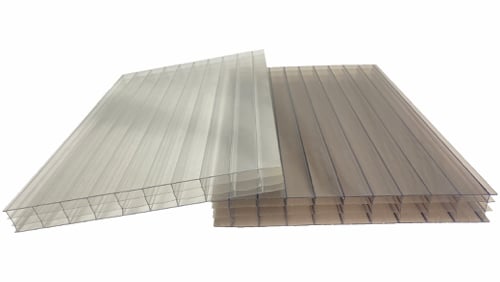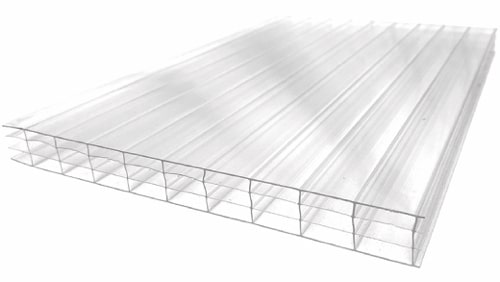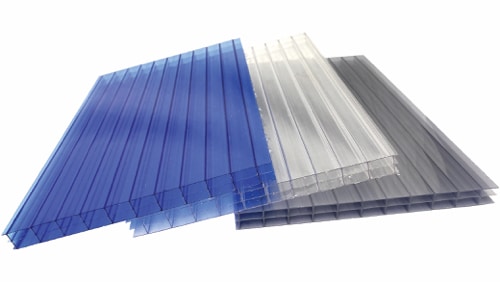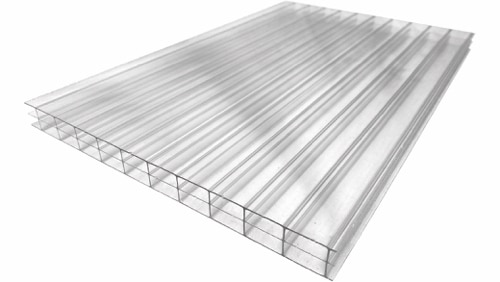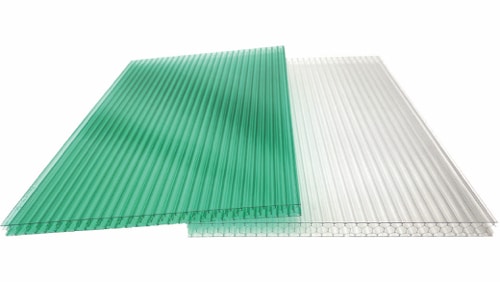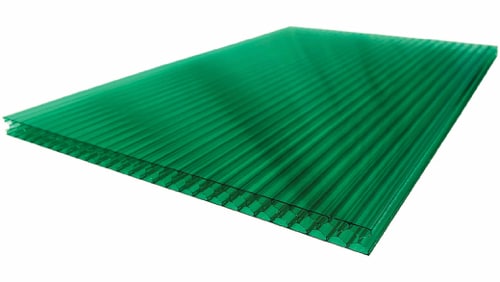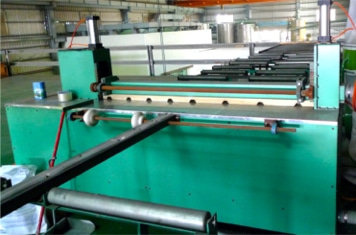Polycarbonate sheets, while extremely flexible and resistant to blunt force, are relatively simple to cut to size. Compared to other skylight materials such as glass or acrylic sheets which require professionals and special tools to cut; with the right tools and knowledge, how to cut polycarbonate sheets can be an easy do-it-yourself project.
Preparations Prior to Cutting Polycarbonate Sheets
As usual, safety comes first before learning how to cut polycarbonate sheets. It is always advisable to wear protective equipment such as protective eyewear, masks, and gloves. When installing and servicing panels, always use appropriate scaffolding and ensure proper placement for even weight distribution to avoid damage. Measure carefully; Make sure to measure every related dimension of the covered area. This includes width, length, height, slope and room for thermal expansion and contraction.
Selecting the Right Cutting Tools for Polycarbonate Sheets
Choosing the right tool for cutting polycarbonate sheets is essential for achieving clean, precise cuts and ensuring the longevity of your materials and tools. The type of tool you select depends on the specific cutting task at hand, whether you’re working on a single piece or multiple layers, requiring straight or intricate cuts. Here’s a guide to selecting the appropriate tools for various scenarios in polycarbonate sheet cutting :
- Cutting single pieces – Handheld utility or box knives are ideal for making simple cuts on individual sheets.
- Trimming – For trimming edges or making minor adjustments, utility knives or metal shears work best.
- Straight long cuts – Bench and table circular saws offer precision and are perfect for making long, straight cuts.
- On-Site Straight cuts – Portable circular saws are your go-to for making straight cuts directly on the job site.
- Cutting small stacks of 5 to 10 pieces of limited length – Jigsaw or portable circular saws can efficiently handle cutting through multiple layers of polycarbonate sheets.
- Cutting curves – When cutting curves or intricate shapes into polycarbonate, a Jigsaw with a fine-toothed blade is the most effective tool. Additionally, a band saw is highly effective for these purposes, especially for thicker sheets or tighter curves, providing smooth, precise cuts with ease.
Basic Guidelines for Cutting Polycarbonate Sheets
- Polycarbonate sheets should always be laid flat on a clean surface and pressed down firmly when cutting.
- Circular saw cutting – Choose saws with fine blades designed to cut plastic. Speed should be within the range between 1800~2400rpm. Rule of thumb, spin fast, feed slow.
- Low to moderate feed rate should be used when the sheets approach the blade, or vice versa. A feed rate that is too high can cause gumming, splitting or breaking of the sheet edges.
- VULCAN polycarbonate panels should be placed on a firm flat base and clamped into position during sawing.
- Polycarbonate tends to gum in high heat, and blades tend to heat up significantly after continuous cutting. Make sure to stop when any gumming happens.
- Rough edges can be smoothed out using fine grit sandpaper.
- Avoid intersecting cuts. Drill a hole at intersection point, then cut the panel up to the hole.
- If the cut sheet vibrates during sawing, cardboard sheet padding may be placed beneath it to absorb the vibrations.
How to Cut Polycarbonate Sheets?
1. Cutting Polycarbonate with Handheld Utility or Box Knives
Cutting polycarbonate sheets with handheld utility or box knives is suitable for thin sheets. This method involves scoring the sheet along the desired cut line. You need to apply firm, steady pressure to make a deep score. Repeat the scoring process several times to deepen the cut. Then, securely hold the sheet and snap it along the scored line to break it cleanly.
2. Cutting Polycarbonate with Table Circular Saws
For cutting thicker polycarbonate sheets over 0.5 inches, a table saw is highly recommended due to its precision and clean cut quality. Begin with accurate measurements and mark your cutting line. To minimize splintering, apply masking tape along this line. Then, equip your table saw with a fine-toothed blade, which is specifically suited for cutting polycarbonate materials, ensuring a smooth finish. This approach ensures accuracy and a high-quality edge on your polycarbonate project.
3. Cutting Polycarbonate with Portable Jigsaw
A jigsaw is optimal for intricate cuts in polycarbonate, allowing for curves and complex designs. Ensure the material is stable on a cutting surface. Position the saw’s shoe against the polycarbonate and gently guide the blade to make the cut, avoiding forceful pressure. The saw’s motor should do the work as you steer the blade, especially when navigating through curves or approaching corners for precision cutting. This technique ensures smooth, accurate cuts without applying excessive pressure.
4. Cutting Polycarbonate with Circular Saws
Circular saws are highly recommended for their quality finishes. For polycarbonates between 0.125 and 0.5 inches thick, use a triple chip cut carbide blade. For thinner sheets (0.0625 to 0.0937 inches), opt for a hollow ground panel blade with fine teeth. Secure the polycarbonate before cutting, and push the saw gently to avoid chipping or melting the material. Remember, circular saws are ideal for straight cuts; for curves, consider a band saw or jigsaw.
Troubleshooting Common Cutting Issues with Polycarbonate Sheets
Working with polycarbonate sheets presents unique challenges, including the risk of melting, gummed edges, or chipping during the cutting process. These issues not only affect the quality of your work but can also lead to material wastage.
However, with the appropriate cutting techniques and preventive measures, it’s possible to achieve clean and precise cuts, maintaining the integrity of your polycarbonate sheets. This section provides essential advice on how to cut polycarbonate sheets effectively, minimizing common issues and ensuring a high-quality finish in your projects.
Melting or Gummed Edges:
- Use low to moderate feed rate when the sheets approach the blade
- Increase blade tooth size
- Reduce saw speed
- Increase feed rate
- Use air to cool blade
- Use blade lubricant compatible with VULCAN Polycarbonate Panels
- Inspect blade for sharpness
- Check blade-fence alignment
- Reduce number of sheets in stack
Chipping:
- Decrease blade tooth size
- Increase saw size
- Provide better clamping and/or support for sheet stack
- Reduce feed rate
- Check blade and arbor for wobble
- Inspect blade for sharpness
Frequently Asked Questions
1. What Is the Difference Between Polycarbonate and Acrylic Sheets?
Polycarbonate and acrylic sheets are widely used in various applications, particularly in glazing, due to their distinct properties. Polycarbonate sheets stand out for their superior impact resistance and flexibility, making them less likely to crack under pressure. However, they are more susceptible to scratches compared to their counterparts. Acrylic sheets, conversely, boast higher clarity and better resistance to scratches, enhancing their visual appeal. Despite these advantages, acrylic sheets are less flexible than polycarbonate and are more prone to cracking when subjected to significant force.
(Read more: Polycarbonate vs. Acrylic)
2. How Do I Cut a Straight Line on a Polycarbonate Sheet?
For cutting a straight line across a polycarbonate sheet, first, secure a straight edge along the desired path of the cut and use a marker to delineate the line. Next, employ either a table saw or a circular saw equipped with a fine-toothed blade to execute the cut. It’s crucial to guide the saw at a slow, consistent pace, ensuring the cut remains clean and precise along the marked line.
3. What Is the Best Way to Cut Multiwall Polycarbonate Sheets?
When cutting multi-wall polycarbonate sheets, it’s advisable to use a table saw equipped with a fine-toothed, carbide-tipped blade. To avoid melting or chipping of the polycarbonate, ensure the saw is set to a high speed. Carefully and steadily guide the saw through the material at a slow pace for optimal results.
4. How Can I Get Rid of Rough Edges When Cutting Polycarbonate Sheets?
To achieve a smooth finish on the cut edge of a polycarbonate sheet, employ a file or sandpaper. This process will eliminate rough patches or burrs, ensuring the edge is clean and uniformly smooth.
For additional information on polycarbonate sheets and how to cut them, email us at [email protected]om
Related Articles:
Polycarbonate Roof Installation : Everything You Need to Know
How to Clean Polycarbonate Roof
Size of Polycarbonate Sheet Selection : How to Choose correctly

